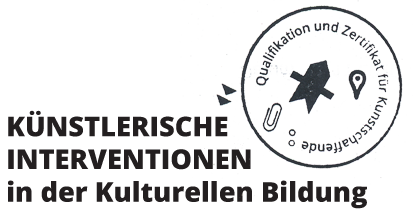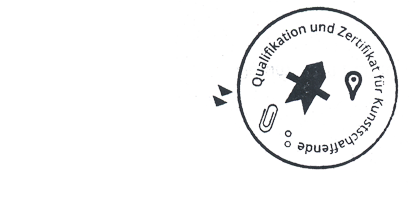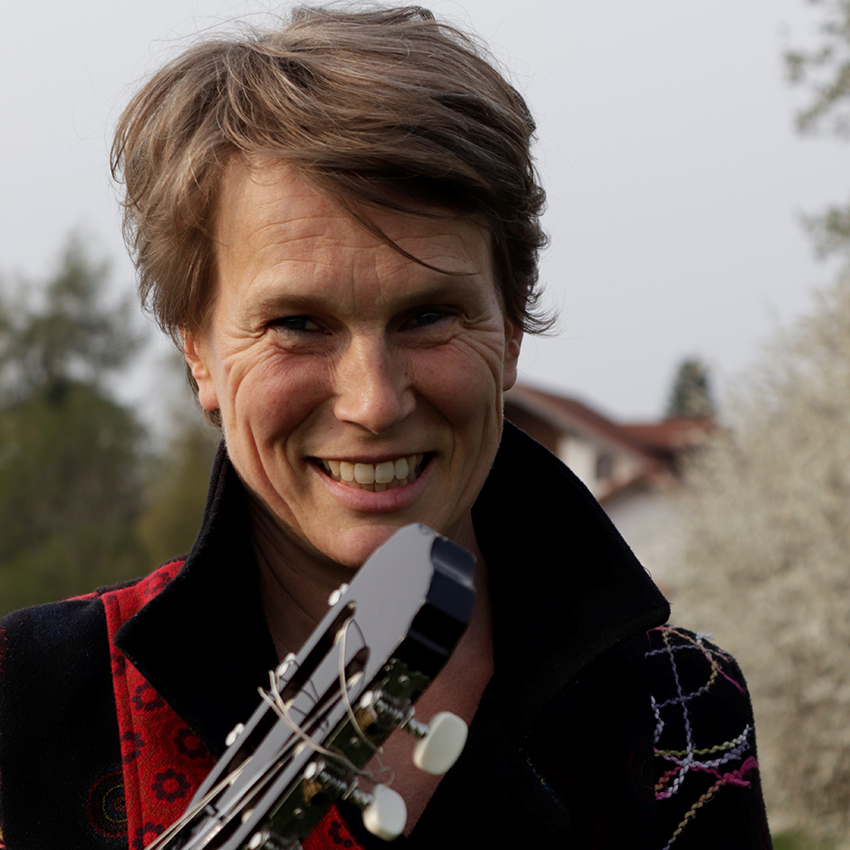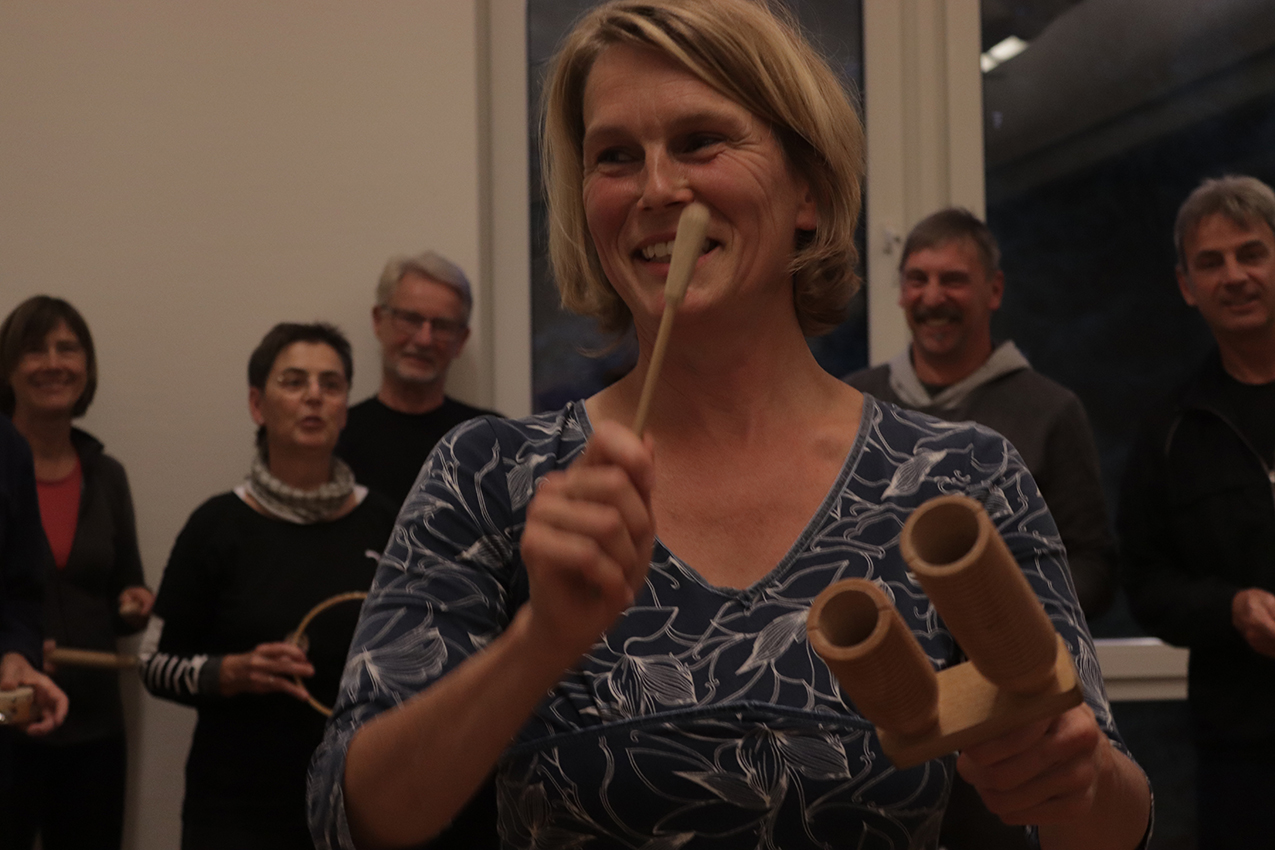



Anke Eberwein studied arts education at the University of Hildesheim in the 1990s and then worked as a music pedagogue and concert manager. After the publication of her diploma thesis on the topic of “Concert Pedagogics”, she became co-founder of the “Kölner Büro für Konzertpädagogik” (Cologne concert pedagogics agency) in 1997, which she then headed for several years. Having been trained as a music geragogue in 2020, she now works as a freelancer throughout the county of Kassel, commissioned by senior citizens’ institutions, clinics and local authorities. She provides musical accompaniment for old people in individual settings (musical house calls, instrumental instruction), in groups (singing and music tours, sing- and play-along concerts, senior citizens’ bands, intergenerative projects) and heads further and continuing education programmes. Her work’s motto is: “Faltenklang – alte Menschen können sich in und über Musik „ent-falten“” (the sound of wrinkles – old people can de-wrinkle/develop in and with music).
www.konzertpädagogik.de
www.faltenklang.de
Contact:
Faltenklang – Anke Eberwein: Musikgeragogin, Konzertpädagogin, Kultur- und Musikpädagogin
0561 – 850 17 472 (Kassel)
0176 – 648 44 830
The sound of wrinkles

When people can’t get to art, art gets to them. In this “cultural work via dropping in on people”, I visit institutions, clinics, quarters and private living rooms, and through making music together, I take up the great longing for inter-human resonance. For this purpose, I travel around the county equipped with flute, voice, guitar and accordion, many simple instruments for joining in and amplifying gadgets and make music in front of windows, in living rooms, on stairs and in gardens. In the context of sing- and play-along concerts, I enable older and old people to participate in culture and in designing activities. We enter a musical dialogue. Here, music is experienced in an entirely new way: intuitively, interactively and improvisationally.
What have you taken home from this project for your artistic activities?
Owing to different aspects shaping their lives, experiences in life, needs, abilities and cultural tastes, my target groups are highly heterogeneous. The music I “bring along” to old people and the artistic language change again and again, given such a backdrop of diversity. We learn from and with each other. Here, the challenge for me as an artist is to offer people in the process of aging, with growing impediments and insecurities, musical options in which they can develop and maintain a positive feeling of being alive. So what is needed is aesthetic-creative, humane and people-friendly approaches to handling aging. Ultimately, such approaches will also contribute to shaping our common cultural and social future.
Which topic turns up again and again in your artistic activities?
Playing music, listening to music, moving along with music: at a cognitive, motor, emotional and affective level. How can reality be experienced aesthetically, holistically and multi-dimensionally with the aid of music? Is (inter-) actively, intuitively making music together by improvising the key to all this? How can I process an artistic field so that creative forces can grow and act in it? I am seeking the interpenetration of art and everyday life, the aesthetic perspective on everyday aspects, a familiar, everyday view of music – beyond virtuosity and exclusivity. All individuals are musical, are touched by music in their own way, everywhere, and a whole life long.
What do you seek to achieve with your arts education activities?
Especially in the rural regions, which are usually underserved with culture, and where age-appropriate cultural events are usually lacking, I seek to stimulate and activate people in their third and fourth stages of life with aesthetic, experience- and perception-enhancing music projects. Via the encounter with themselves and music (instrument, voice, dancing), identity, finding one’s self, developing one’s abilities, self-efficacy, acquiring insights and self-realisation (“finding one’s own tone”), learning and further development become possible. Old people’s quality of life can be maintained and improved with musical means.
What, in your view, is the essence of an artistic intervention in arts education?
I try to create an aesthetic space in a familiar, calming and stimulating atmosphere in which art can emerge and develop. In this space, I accompany people in recalling moments in life, familiar aspects – a song, a piece of music, an instrument – or also sensations such as happiness, grief, love. Familiar aspects are put into a new context during a dialogical process out of which new forms emerge. For example, the protest song “Bella ciao” is newly texted together and placed in a personal context or rewritten instrumentally as a mourning blues. Here, the actors experience new experiential environments and self-efficacy – in the music, they perceive their own creative strength.